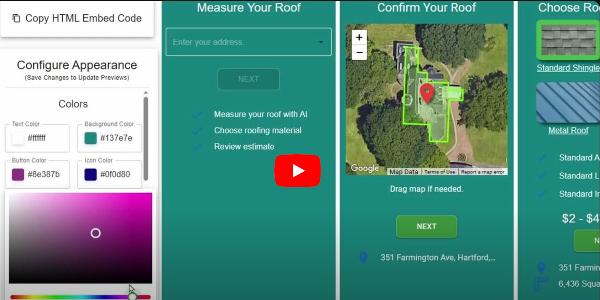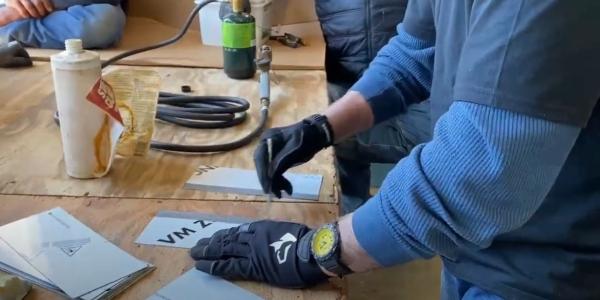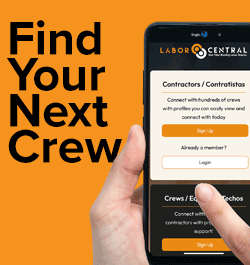Six Steps to Building a Solid Estimate

By Roland Miles, Estimating Edge.
One of the most important skills needed to run a successful contracting business is the ability to prepare accurate job estimates.
If a contractor’s estimates aren’t accurate, there is a risk of losing money on the project. Developing a precise project estimate requires attention to detail and should adhere to the best practices of the industry. Estimators have told us that following these six steps will help ensure that estimates are accurate and on point for every project.
Step 1 – Assess and Analyze
Begin by conducting an assessment of the project that you will be bidding on. Visit the site and identify any special circumstances that might need to be addressed. For example, if the building is located in a metro area take note of the surrounding buildings. Will there be room for a crane if needed? Will traffic need to be blocked off while delivering materials or moving equipment into place? Pay attention to the landscaping. If there is a likelihood that it could be damaged during the work, costs for repair or cleanup will need to be included in the estimate.
These are some of the things that are commonly overlooked that, if unaccounted for in the bid, can lead to the job quickly becoming unprofitable.
Next, continue the analysis by drilling into the project. Review the architect’s specifications. Building departments and code compliance officials are very strict about holding contractors responsible for ensuring the project meets the specified requirements. Look for any mistakes that may have been made in the specification or for things that don’t make sense and don’t be afraid to ask questions about it. It shows the general contractor that you are paying attention to the details of the job and ensures your project ends profitably.
Step 2 – The Takeoff
In order to move forward with estimating measurements are needed. Using a digital takeoff tool is the recommended method since most prints are now provided digitally. Performing takeoffs by hand can contribute to increased overhead since printing blueprints can be costly. Contractors on average will win about 20 percent of the jobs they bid on so it’s smart not to spend money printing blueprints on projects that might not ever make it onto the schedule.
Tools exist to help with the measurements. If using aerial measurement reports, it’s recommended to field verify. Contractors relying on satellite imagery freely accessed on the internet need to be certain to verify the scale. The quality of the images aren’t ideal for accuracy and are better used for reference only and not for takeoffs.
It’s important to be consistent throughout the takeoff process. For example, some contractors prefer to measure from the inside as they feel it is more accurate whereas other contractors prefer using the outside line because it allows for a waste factor. Whichever method is chosen, be sure to use it consistently during the takeoff.
The most important thing during this step is attention to detail. Take your time and focus. Look closely and carefully at everything. With construction bids being more competitive than ever, missing something can be the difference between whether the-project is profitable or not.
Step 3 - Pricing
Now it’s time to assign a price to everything. Take the list of materials that was developed from the takeoff and specification and obtain current pricing on those products from your manufacturers and distributors. Current pricing is critical to the accuracy of the bid and using costs from previous bids should not be relied on.
It’s important to be aware of when the project will start. If it is a new construction project, it may be six, eight or even 12 months from the time the estimate is being developed to the project starting. If that is the case, it’s important that the estimate contain a clause that allows for pricing to be changed to current costs when the job is ready to move forward. Most suppliers will give a three-month price guarantee but beyond that timeframe there needs to be an indicator that the price may change.
Many contractors think that padding the profit or overhead can allow for increases in material costs but that isn’t the ideal method as it creates confusion about the project’s real costs. The best estimate will have material pricing as accurate as possible. If the project doesn’t contain a clause for changing prices, ask the general contractor about adding one. Don’t just assume that since it is not there to begin with that it can’t be added. Most general contractors will be happy to talk about it and likely have more respect for your company because they see that you are paying attention to all the details.
Step 4 – Determining Labor Cost
Determining the labor cost is one of the most important steps of building the estimate. The bottom line to being accurate is having knowledge of the trade and experience. Estimators needs to get out in the field and see what’s happening on jobs to stay sharp on the labor and have open communication with project managers.
Consider the crews and how long it takes to them to perform different aspects of the project. How many square feet can the crew install in one day? This is where it will be important to go back to step 1 where the project was analyzed and assessed. There may be factors that will slow down the crews that need to be taken into account.
If the project requires a tear off but there isn’t room to position a dumpster next to the building, the tear off team may need to haul waste from the site to the dumpster adding time to the project. If the job is on a high-rise building, how much time will be needed for your crews to get up there in the morning? Are there limitations on working times because of needs of the building occupants? All of these are situations that have the potential to affect labor costs.
Step 5 - Markups
With cost of materials and labor in place, the next step is to add in the rest of the costs including overhead and labor burden. If you don’t know what your true overhead is, consult with your accountant. Take into consideration all the costs including utilities and facilities. What is the electric bill? Is the building rented or owned? How much are you paying for insurance?
Don’t forget about the office staff. It’s not just about the cost of the crew in the field but there are costs associated with the team in the office who are supporting the project. Be sure to account for future growth plans as well. If the business hopes to grow and will need a new facility to support that, those costs need to be figured into the estimate.
Include the costs associated with labor burden such as FICA, health insurance, training and more. The crew may be paid at an hourly rate to perform the work but the cost to the business per hour is much higher when factoring in these additional costs.
Don’t forget about other miscellaneous costs that could be associated with the project. There may be permit fees, engineering fees or even fees related to having traffic diverted while moving equipment or materials in and out if in a metro area.
Next account for your profit. This should be the only thing that is negotiable on the estimate. If the estimate is done right all the other costs are fixed costs that can’t be negotiated.
Step 6 – Retrospect
This step is critical to continuing to improve the estimating process. After that project is completed take a look at where things ended up. Determine what the actual costs were and if they varied from the original estimate, try to figure out why. If the estimate called for two days to complete a specific task but it ended up being four determine the reason behind the delay. Learning from past mistakes or errors will help you refine future estimates.
Conclusion
The key to building accurate and precise estimates are noting and paying attention to special circumstances that can affect cost or time. Paying attention to all of the details and being sure that markups and pricing are accurate helps you develop better estimates and ensures profitability.
About the Author
Roland Miles has been with The Estimating Edge for over 10 years serving in many different roles. Previously a Florida Certified Building Contractor he has worked as an Estimator and Project Manager throughout his career. Roland has worked on projects ranging in size and scope from small residential to large commercial. After serving in the U.S. Coast Guard he moved to Florida where he resides with his family and is currently the Subject Matter Expert for The EDGE.
Learn more about Estimating Edge in their RCS directory.






















Comments
Leave a Reply
Have an account? Login to leave a comment!
Sign In